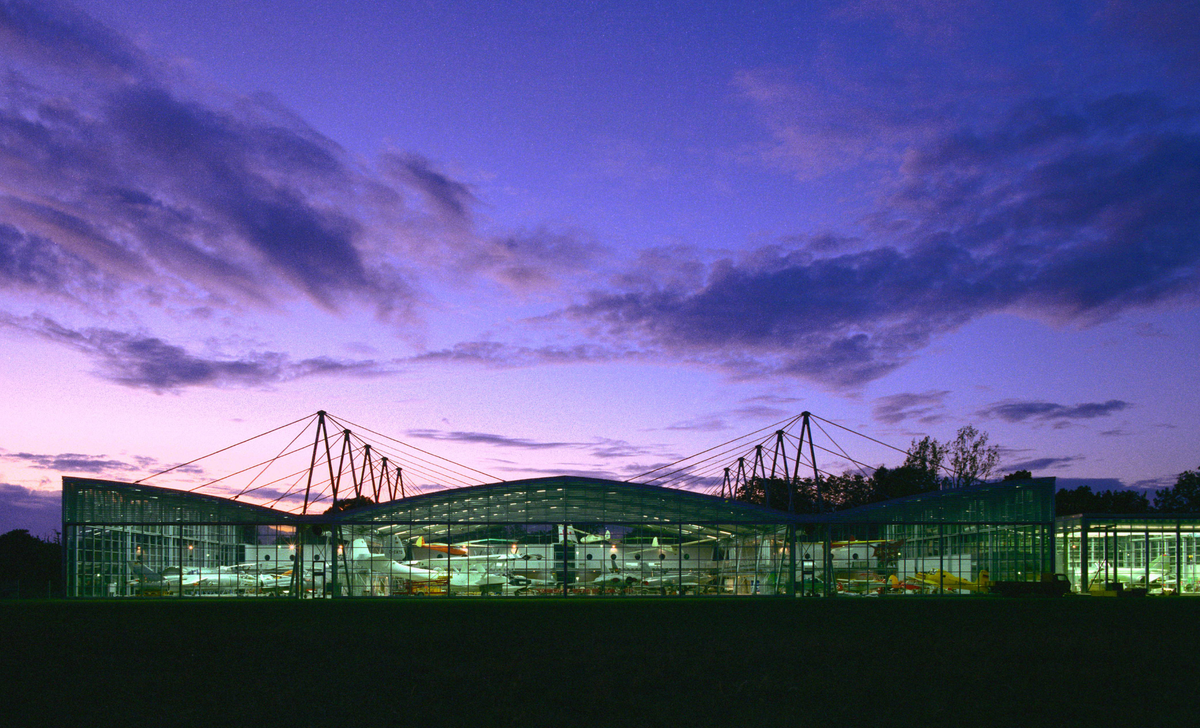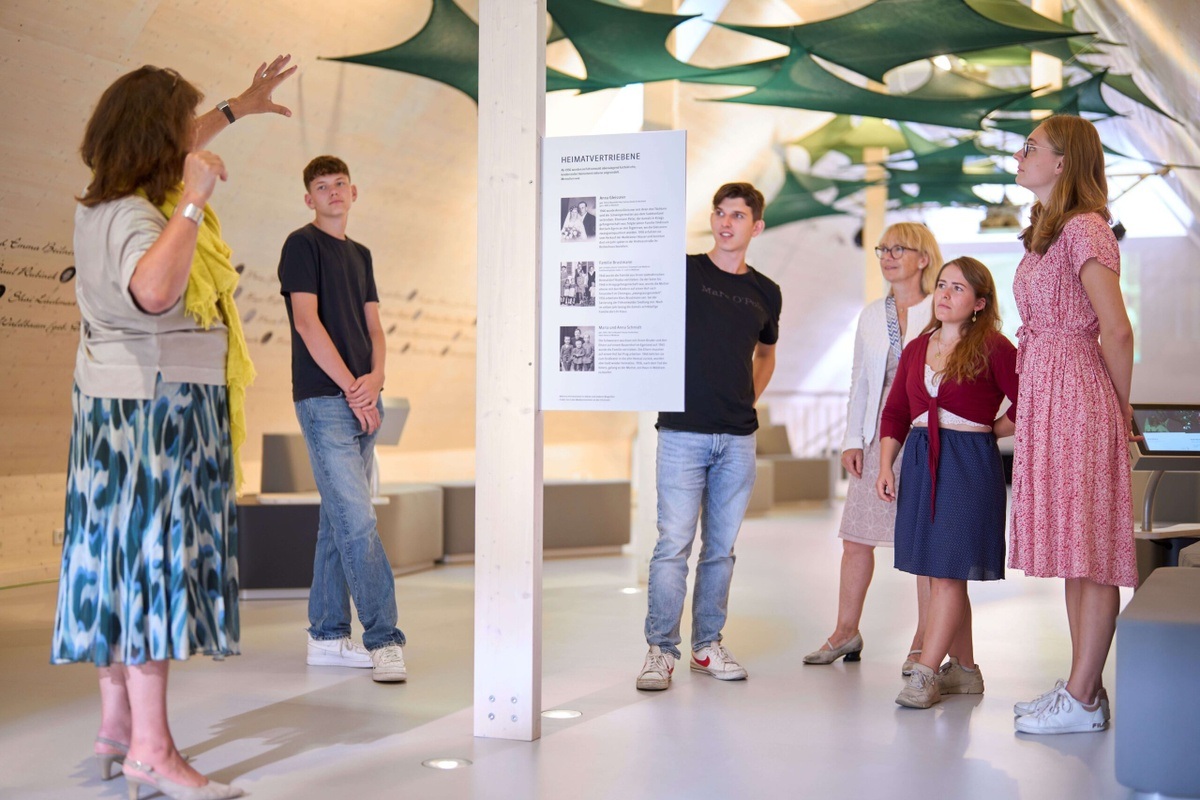Museums in the Munich area that are worth a visit
Have you already been to the Pinakothek museums, the Haus der Kunst or the Lenbachhaus and the smaller Munich museums are no longer an insider tip for you? No problem - there are also plenty of museums to discover around Munich.
Franz Marc Museum at Lake Kochelsee
MuseumFranz Marc Museum Kochelsee
82431 Kochel am See
In addition to works by the expressionist painter Franz Marc, co-founder of the "Der Blaue Reiter" community, this museum right on the shores of Lake Kochelsee also exhibits works by contemporaries and other important artists of the 20th century - until the end of May, for example, by Horst Antes. If you're in the mood for more activities after your visit to the museum, you can purchase a combined ticket: For €16, this includes a round trip across Lake Kochel in addition to admission to the museum.Admission: adults €9.50, concessions €6, children €3.50 (7-16 years, no admission up to 6)
Museum Penzberg
MuseumMuseum Penzberg
82377 Penzberg
The artist Heinrich Campendonk was also a member of the "Blauer Reiter" and came to Bavaria at the invitation of Kandinsky and Marc. You can marvel at his works in the Museum Penzberg - it houses the world's largest Campendonk collection, which not only impresses with the number of works, but also demonstrates his artistic range: Reverse glass paintings, oil paintings and watercolors, but also ink brush drawings and woodcuts are exhibited here. In addition to the Campendonk Collection, the exhibition "Gerhard Fietz.Admission: Adults €7, reduced €4, children €5 (5-16 years, no admission for under 5s)
Murnau Castle Museum
Schloßmuseum Murnau
82418 Murnau
There is a lot to discover: This is probably the best way to describe the Murnau Castle Museum. The south and west wings of the castle house numerous different exhibitions on different levels. The focus is on the works of Gabriele Münter (over 80 paintings, drawings and prints!) as well as works by the artists' groups of the "Neue Künstlervereinigung München" and the "Blaue Reiter". But there are also exhibitions that impart a great deal of knowledge: For example, about the castle itself or the Murnau landscape. Admission: Adults €8, concessions €6, children €2 (6-18 years, no admission up to 5)
Buchheim Museum of the Imagination
Buchheim Museum
82347 Bernried
You can also follow in the footsteps of Expressionism in Buchheim's "Museum of the Imagination". The museum is designed to appeal to all the senses. Not only are there various collections of paintings, watercolors, drawings and prints on display, but the museum's architecture alone is very special: the elongated building, which is partly built into the hillside, is topped off with a twelve-meter-long footbridge that hovers over Lake Starnberg! By the way: In addition to the Murnau Castle Museum, the Penzberg Museum and the Franz Marc Museum, the Buchheim Museum is also part of the"MuSeenLandschaft Expressionismus". admission: adults €10, concessions €5, children €5 (6-17 years, up to 5 years free of charge)
Olaf Gulbransson Museum Tegernsee
MuseumOlaf Gulbransson Museum am Tegernsee
83684 Tegernsee
He became famous as an illustrator for the famous Munich satirical magazine "Simplicissimus": The Norwegian Olaf Gulbransson (1873-1958), who settled in Tegernsee in 1929. And that is exactly where a museum is located today, which displays a selection of his sharp-witted caricatures and also exhibits rare oil paintings by the artist. Particularly exciting for Munich residents: the permanent exhibition is currently complemented by a special exhibition to mark the 100th birthday of Ernst Hürlimann, whose caricatures paint a humorous picture of Munich residents - "with all their idiosyncrasies and habits."Admission: adults €10, concessions €8, children free (up to 18 years).
Markus Wasmeier open-air museum at Schliersee
Markus Wasmeier Freilichtmuseum am Schliersee
83727 Schliersee / Neuhaus
Museum goes outdoors: At Schliersee, Markus Wasmeier's open-air museum invites you to get to know Bavarian culture, architecture and tradition - deliberately without kitsch, but authentically. The former professional skier has used his love of his homeland to preserve numerous historic buildings, some of which are very old and threatened by decay: They were dismantled and then rebuilt with great attention to detail. You can visit estates that are hundreds of years old and learn all kinds of interesting facts about old crafts and country life. And afterwards, it's worth making a detour to the inn, also part of the museum, for excellent Bavarian cuisine.admission: adults €9.90, reduced €5.90, children free (up to 16 years)
Aviation hangar in Schleißheim
MuseumFlugwerft Schleißheim
85764 Oberschleißheim
It's not just cool for kids: In the Flugwerft Schleißheim of the Deutsches Museum, you can marvel at the exciting history of aviation on an impressive 8,000 square meters of exhibition space and find out how the individual vehicles work and what special features there were in the history of development. The exhibition covers all eras of flight, from the start with early gliders to much more recent airplanes, helicopters and rockets.admission: adults €7, concessions €3, children €3 (6-17 years, up to 5 years free of charge)
BADEHAUS memorial site
Erinnerungsort BADEHAUS
82515 Wolfratshausen
The BADEHAUS memorial site in Wolfratshausen makes a very important contribution to preventing people from forgetting: the (migration) history of the region from the Nazi era to the post-war period is made tangible there - for all generations, nations and religions. From 1940, the National Socialists built a settlement for armaments workers in Wolfratshausen Forest; later, the death march from Dachau concentration camp passed through there. Homeless Jews who survived the Holocaust were subsequently housed here; in the 1950s, Catholic displaced persons were also settled here. A multi-layered history of migration that is well worth learning more about. The BADEHAUS memorial site has also received an award for its special commitment to preserving Jewish history and combating prejudice in the present day.




